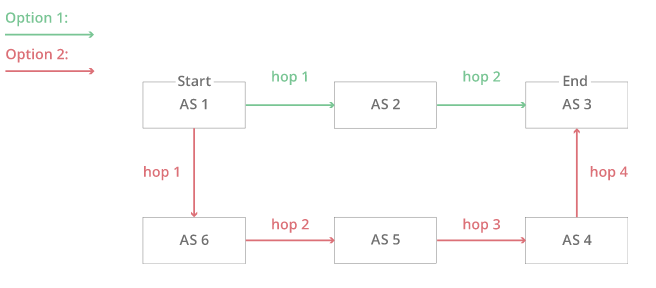How BGP works
| Author |
Date |
Revision |
| Samuel Knoppe |
04/19/2024 | 1.0 |
| Related product (if any): |
N/A |
| Description: | Describes what Border Gateway Protocol (BGP) is and what it does, and goes into detail about Exterior Gateway Protocols (EGPs) and how they relate to Interior Gateway Protocols (IGPs). |
| Notes: |
N/A |
| Files Needed: |
N/A |
| Information: |
Border Gateway Protocol (BGP) is an Exterior Gateway Protocol (EGP) that makes the Internet work by enabling data routing between autonomous systems (AS). BGP can be seen as the postal service for the Internet. When someone submits data via the Internet, BGP is responsible for looking at all of the available paths that data could travel and picking the best route.
The Internet is a network of networks. It is broken up into hundreds of thousands of smaller networks known as autonomous systems (AS). Each of these networks is essentially a large pool of routers run by a single organization. If we see BGP as the postal service of the Internet, ASes are like individual post office branches. A town may have hundreds of mailboxes. They forward outbound transmissions to the AS, which then uses BGP routing to get these transmissions to their destinations. The above example illustrates a simplified version of BGP where there are only six ASes on the Internet. If AS1 needs to reach AS3, it has two different options:
|

